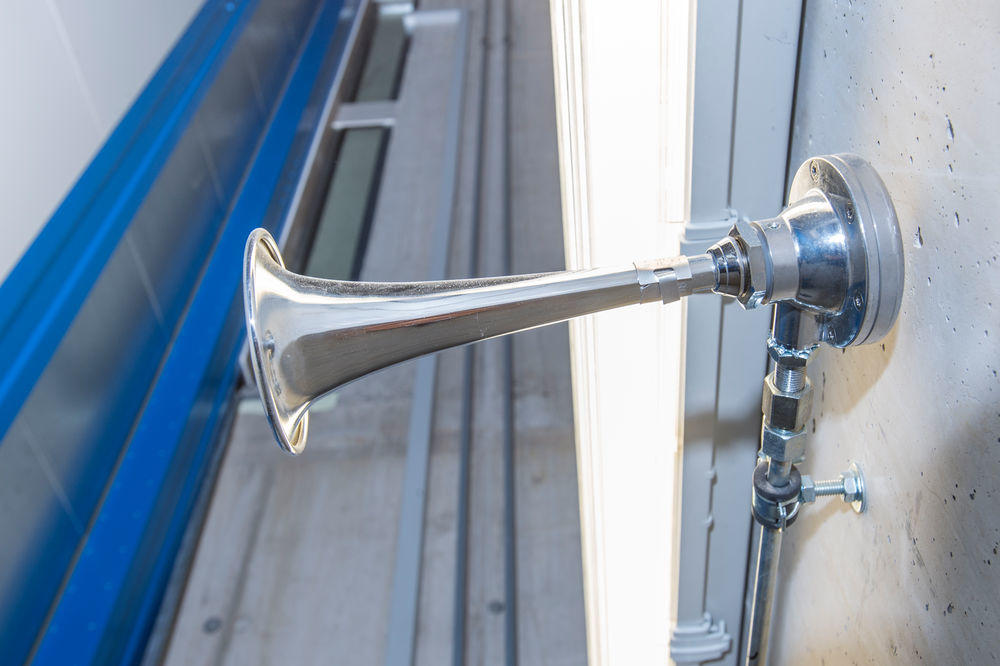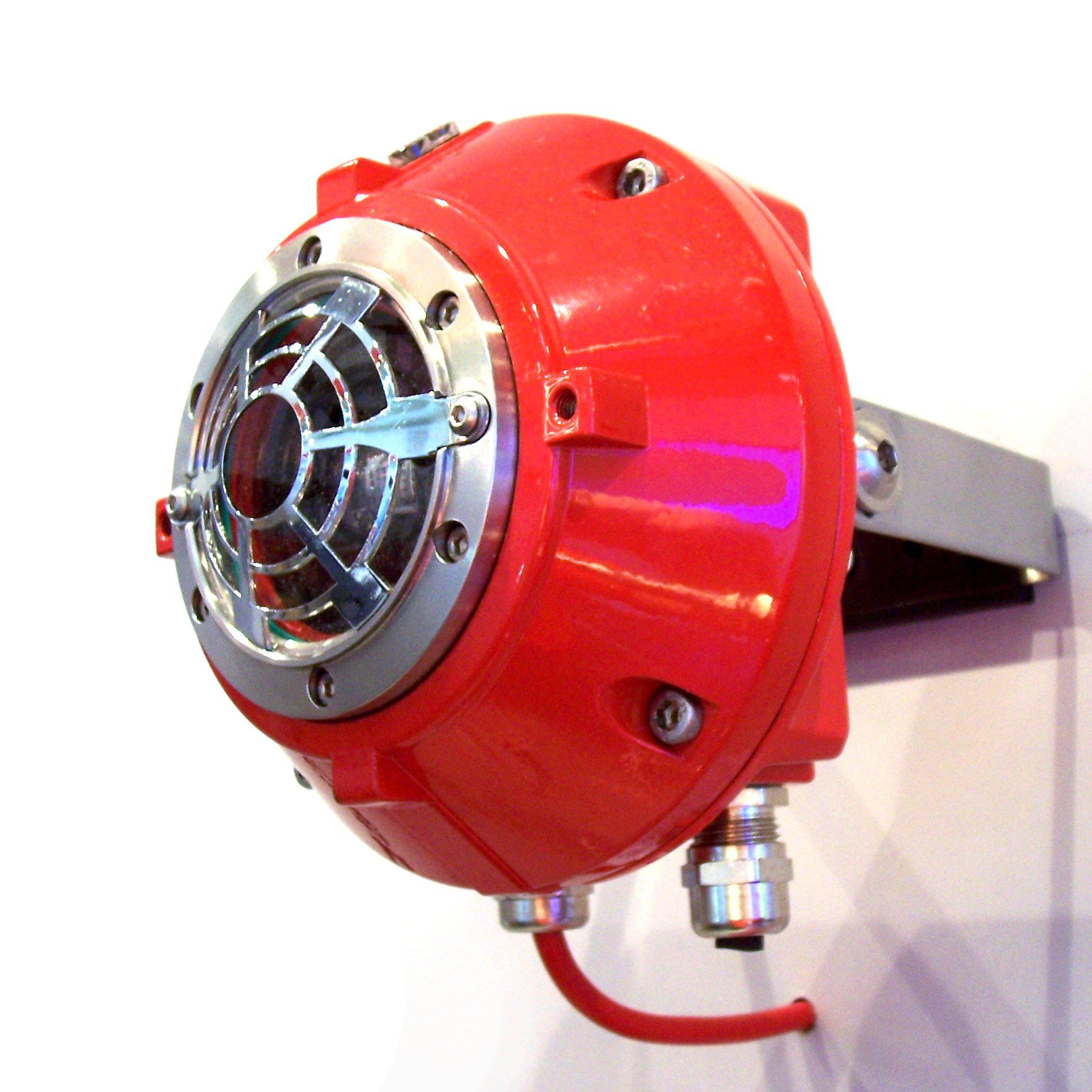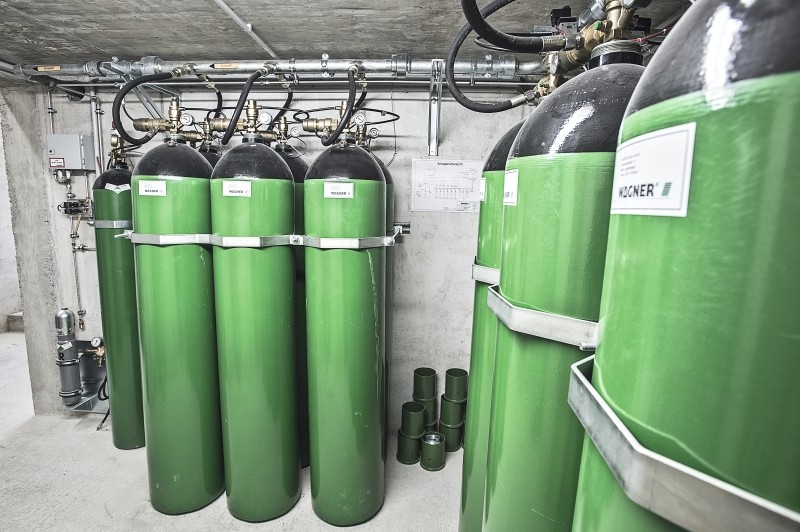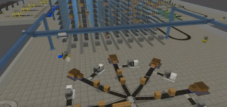What characterizes good fire protection in the warehouse?
Language selection 📢
Published on: August 18, 2016 / Update from: November 26, 2018 - Author: Konrad Wolfenstein
In times of increasing competition and increasing globalization, many companies are focusing on increasing productivity. However, important other areas are often neglected. This includes, for example, reliable fire protection. In some cases this has fatal consequences, because in the event of a fire, companies quickly incur losses that threaten their existence. Comprehensive fire protection covering all areas is therefore essential, because in commerce and industry the risk of fire does not only exist in production. Over a third of all major fire damage occurs in warehouses and logistics areas. No wonder, as there are a wide variety of fire hazards in a typical warehouse:
- Pallets with goods and parts stacked close together
- highly flammable products or packaging
- High and closely spaced rack structures create a chimney effect in the event of a fire (especially in high-bay warehouses)
All of these factors represent threatening fire accelerants that can quickly cause a fire to get out of control. The causes of such a camp fire are just as varied:
- Defects in electrical systems
- Welding work
- heat
- Spontaneous combustion of stored raw materials or products
- Employees who smoke
- Arson
By using closed and highly dense storage systems with access control and air locks, a large number of these dangers can be averted. If the systems are also equipped with automatic fire protection, the risk to property, storage equipment and goods is further reduced.
Fire detection
But the best extinguishing system is of little use if the fire is not discovered in time. Because a fire has many faces: flames, smoke, heat and gas development. The right detectors and fire alarms are crucial for early fire detection. Depending on the industry, a wide variety of industrial fire detectors can be used. Whether in a clinically clean clean room or a dirty, hot production process - the robust devices have a wide range of uses and can be used indoors and outdoors under the most difficult conditions. Smoke extraction systems are also often used. Using their highly precise air analysis, they report even the smallest contaminants in the air and immediately sound the alarm in the event of a fire.
Once this has happened, different deletion methods can be used. The choice of means depends on the storage system used and the goods stored. High-bay warehouses are often secured with sprinkler systems because their size makes it difficult to flood them with enough gas quickly enough. In contrast, damage caused by extinguishing water is particularly serious for sensitive parts and materials, which makes the use of gas sensible. There is therefore no off-the-shelf fire protection for logistics facilities, as the structural conditions must also be taken into account.
Gas – extinguish without leaving any residue
In this area, the intralogistics manufacturer Kardex Remstar, together with the fire protection experts from the WAGNER Group , has developed a solution for its vertical shuttle and paternoster systems that is based on the use of gas for extinguishing. ( Research on Security Trade Fair 2016 Wagner Group with Kardex)
Residue-free and low-reaction
High-density storage in self-contained shuttle systems requires the earliest possible fire detection, because this is the only way a fire can be discovered and extinguished in its early stages. early detection system used by Kardex Remstar carries out a permanent check by examining the air sucked in for smoke particles. If the particle concentration exceeds the specified limit, the system triggers an acoustic and visual alarm. The fire is extinguished immediately, while storage equipment and goods remain protected. This is done through the use of nitrogen. In the event of a fire, this is fed into the storage unit at low pressure through diffuser tubes. In this way, the oxygen level in the device drops quickly and evenly, which leads to the fire going out.
The flooding is automatically triggered with a time delay so that people can leave the danger area. Additional holding flooding prevents a possible flare-up. The oxygen concentration is kept so low for at least ten minutes that re-ignition is sustainably prevented.
Gas extinguishing system with nitrogen
In addition to the inert gas nitrogen, carbon dioxide is often used. Systems based on this are characterized by a wide range of applications. As a natural component of the ambient air, carbon dioxide is a cheap and easily available extinguishing agent that is not electrically conductive. Due to their special properties, they can be used to protect not only rooms but also open areas. Carbon dioxide extinguishing systems require little space for storage, which makes them ideal for installation even in small logistics areas.
Water extinguishing systems integrated into the shelf
Of course, water-based systems are also widespread. In addition to the already mentioned application in high-bay warehouses, they can also be used in conventional shelf warehouses. The use of particularly flat sprinklers enables water extinguishing systems to be integrated even in narrow shelves. The sprinklers used have a flat screen spray characteristic, which ensures smaller distances between the sprinkler and the stored goods and thus leaves maximum space on the shelf for parts to be stored.
Under certain circumstances, water can also be used as an extinguishing agent in cold storage facilities. ESFR (Early Suppression Fast Response) dry sprinklers are particularly suitable here because they work in a freezing range of up to -40 degrees Celsius. In order to prevent the sprinkler pipes from icing up, they only fill with water when the extinguishing process is triggered.
These are just a few examples that show how diverse effective fire protection measures can be in intralogistics systems. It therefore seems advisable in any case to consult an expert to choose the most suitable measure for each individual. Ideally, a fire will not even start or can be extinguished quickly and without damage.
Fire protection measures in the company
The following applies to all companies: effective protection management is the prerequisite for successful fire protection. These include, among other things, published, generally accessible fire protection regulations, escape and rescue plans and fire extinguishing measures. It is also advisable to clarify the following points:
- Determination of suitable fire protection and first responders as well as fire protection officers
- Strict compliance with fire safety regulations
- Regular fire drills for employees
- Quickly recognizable, easily accessible escape routes and emergency exits
- Regular maintenance of fire protection systems
- Establishing direct contact with the fire department


























